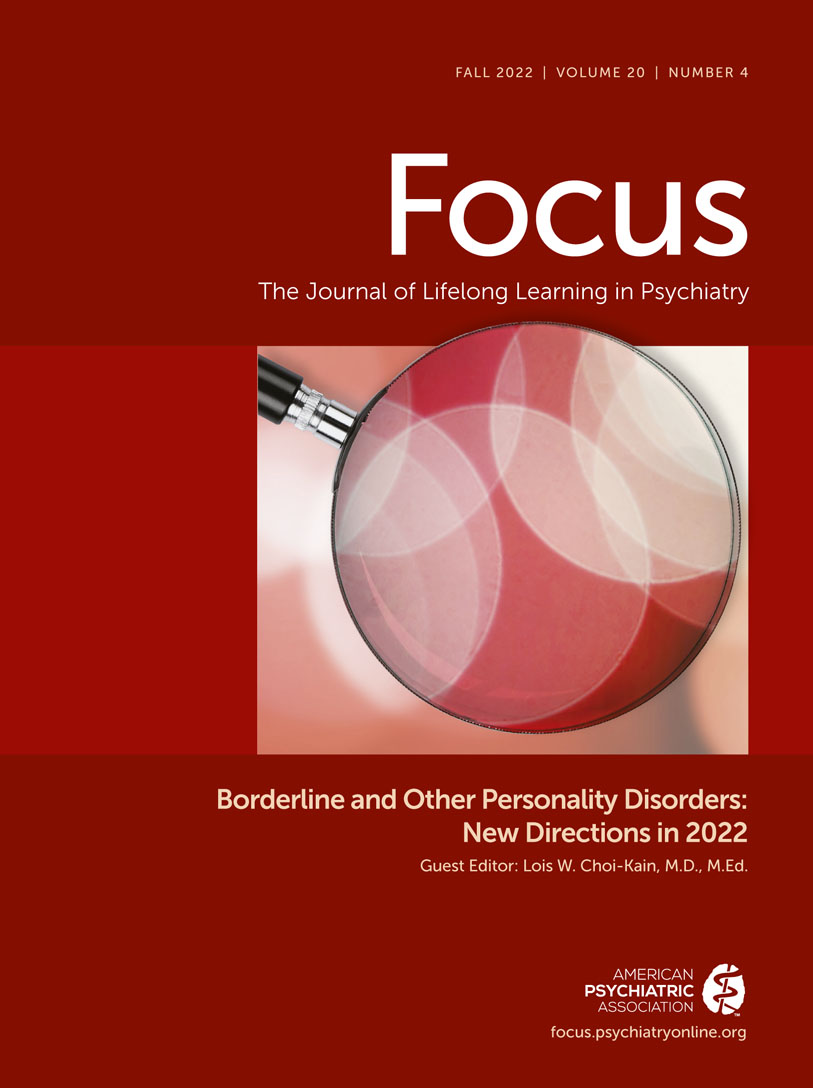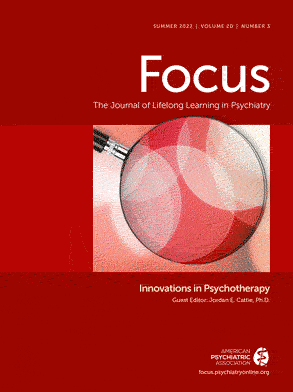Medical communications researchers Roter and Hall (
1) commented that “talk is the main ingredient in medical care and it is the fundamental instrument by which therapeutic goals are achieved” (p. 8). The doctor-patient relationship has been, and remains, the cornerstone of all medical care. It is the medium by which symptom data are gathered, diagnoses are made, and the patient is engaged in the joint enterprise of treatment. An empathic connection is at the core of this healing relationship (
2). Clinical empathy involves understanding a patient’s perspective, resonating emotionally, and expressing care and concern, sometimes labeled the cognitive, affective, and behavioral dimensions of empathy (
3). Compassion, a similar concept, is when empathic feelings and thoughts include the desire to help. In treating a “difficult” patient, researchers have identified three sources of difficulty: the patient’s issues; the relationship between the clinician and the patient; and the social, cultural, or systemic context of the encounter (
4).
Heymann’s method starts by helping clinicians practice dealing with distractions. Mindfulness meditation is one technique. Small distractions may be mentally acknowledged and confronted. Larger worries may be handled by making an appointment with oneself for a later time to problem-solve the issue. Having set aside distractions, the clinician is prepared to be fully present in the encounter.
Clinical Vignette
Ms. Tami Thompson is a 20-year-old college student who recently took a leave of absence from a college several hours away because of erratic moods, self-injury (cutting), suicidal ideation, and conflict with her roommate. She has been in treatment with Dr. Patel for the past 3 years. Ms. Thompson burst into the psychiatric office waiting room and checked in. She took a seat near the receptionist, opened a magazine, and began to flip through the pages loudly. Her sense of urgency was palpable.
Dr. Patel sat in her office, her eyes closed, breathing deeply in mindfulness meditation. She opened her eyes, looked at the clock, took one last deep breath, walked to the door, and opened it.
“Please come in,” she said, motioning to Ms. Thompson.
Ms. Thompson practically leapt out of her chair and entered the office. Before she sat down, Ms. Thompson blurted, “You gave me bad advice, Dr. Patel!”
Dr. Patel, slightly taken aback, replied in a calm voice, “Really? I’m sorry. Tell me what happened.”
“Well, you know I’ve been dating this guy, Danny,” began Ms. Thompson. “You said that I should be honest with him about why I am taking a leave of absence from college. Just like I thought, he broke up with me! He said that he thought a long-distance relationship would be too hard. I’m only 2 hours away! I was just starting to trust him, too! I think that when I told him I was dealing with depression, it scared him off. And you told me to tell him! I started cutting again. I was suicidal too, but you should be proud of me that I didn’t do anything. My mom said that I would have to go back to the hospital if I did. Well, if I were dead, I wouldn’t have to worry about any of this, would I? Oh, and by the way, you also said the medicine would help. It doesn’t seem to be, does it?”
Dr. Patel’s eyes grew soft as her gaze met her patient’s. She reviewed in her mind the skills practiced in the theater workshop she took on empathic connection. The mantra—focus on needs—came clearly to mind. What needs was Ms. Thompson voicing? Certainly, she was voicing the need to feel heard and validated. She needed to feel in control, as evidenced by her accusing tone. She needed to feel helped and cared about. Dr. Patel chose her words carefully.
“I hear you, and I am very sorry this is happening,” said Dr. Patel. “Trusting is very hard for you, and it was brave of you to tell Danny the truth about your depression. I understand how you must feel betrayed—by Danny and by me.”
“So, now I have new scars,” said Ms. Thompson, “just when my old ones were starting to heal.”
“Cutting must help you feel in control when life feels out of your control,” said Dr. Patel. “I’m sorry that you cut yourself. Thank you for not going further. You didn’t attempt to kill yourself, even when you felt like it. You told the truth and trusted that it was the right thing to do. Being honest brings you closer to others. It also can make you vulnerable to getting hurt. I’m very sorry about the hurt.”
Ms. Thompson continued, “Well, my mom said that if he didn’t accept me with my depression, it probably wouldn’t have worked anyway. What does she know? Maybe she’s right. I don’t know. I feel confused and angry.”
“And hurt,” added Dr. Patel.
“Of course, I feel hurt,” said Ms. Thompson. “Wouldn’t you? Oh, and my mom said she doesn’t think the medication is helping. I thought it was, and now I don’t know. I just want this pain to go away!”
“The emotional pain is agonizing,” said Dr. Patel, “and you want something that can really help.”
“Yes,” said Ms. Thompson. “Cutting helps for a while, but then the emotional pain is worse than ever. Perhaps I need a second opinion. This medication trial is taking too long.”
Dr. Patel asked, “Do you want a second opinion about the medication, the treatment plan, the therapy, or all of them? Of course, you are welcome to get another opinion. But I hope we can also discuss what your experience has been—what, if anything, has helped. Any side effects. What are you looking for in a treatment partnership to help you feel less depressed and more in control?”
Ms. Thompson was quiet, and a single tear began to trickle down her cheek.
“Well, you have stuck with me for 3 years now. That’s way longer than any other psychiatrist. So, I guess I mostly trust you. I mean, as much as I trust anyone, which isn’t very much.”
Dr. Patel ventured a reserved smile. “I don’t know. I think you have made some good progress on honesty and trust. You came today and were honest about how you felt. How can we move forward with your safety and your treatment?”
Dr. Patel and Ms. Thompson reiterated the safety plan. They made an extra appointment for several days hence to provide more support and to discuss medication and treatment plans more fully. Ms. Thompson smiled as she left.
“See you on Friday, Dr. Patel,” she said. Then, she followed with a quip she couldn’t contain: “Maybe.”
“Yes, see you Friday—for sure,” Dr. Patel countered. When she closed the door to her office, Dr. Patel sat, shut her eyes, and took a deep breath.

